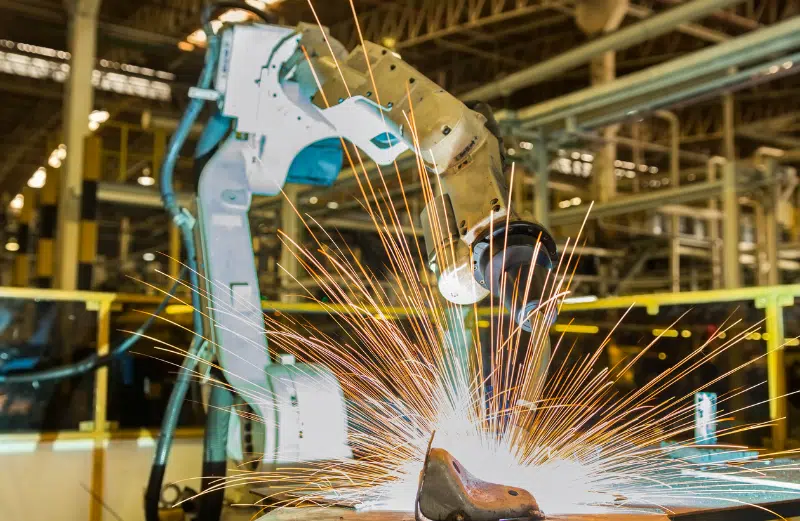In the fast-paced world of manufacturing, staying ahead of the competition often hinges on innovation and efficiency. Robotic welding has emerged as a true game-changer in the industry, offering manufacturers an unprecedented level of productivity and consistency in their projects. Let’s dive into how this transformative technology is reshaping the landscape of manufacturing.
Unleashing Productivity:
Robotic welding is all about streamlining the manufacturing process. By automating the welding operation, manufacturers can significantly boost productivity. Robots work tirelessly, 24/7 if needed, without breaks or fatigue. This means projects can progress rapidly, meeting tight deadlines and increasing overall output.
But it’s not just about speed. Robotic welding systems are highly efficient. They utilize advanced programming and state-of-the-art sensors to optimize the welding process. This ensures that every weld is precise and consistent, reducing the need for rework and saving valuable time and resources.
Precision on a New Level:
Consistency in welding is vital for the structural integrity and quality of the end product. This is where robotic welding truly shines. Robots are incredibly precise, following programmed instructions with micrometer-level accuracy. Whether it’s welding intricate components or handling repetitive tasks, robots maintain consistency from the first weld to the last.
Moreover, robotic welding minimizes human error. Skilled welders are invaluable, but even the most talented professionals can encounter fatigue or distractions. Robots, on the other hand, execute each weld with unwavering precision, ensuring that every project meets the highest quality standards.
Enhancing Safety:
Safety is paramount in manufacturing, and robotic welding plays a pivotal role in this regard. By automating welding processes, manufacturers can reduce the exposure of human operators to hazardous conditions. Robots are designed to work in environments with high heat, sparks, and fumes, thus mitigating potential health risks.
Additionally, robotic welding systems are equipped with advanced safety features. They can detect anomalies in real-time and immediately shut down if necessary, preventing accidents and injuries. This commitment to safety is not only beneficial for workers but also helps manufacturers avoid costly setbacks due to workplace incidents.
Versatility and Adaptability:
Robotic welding solutions are highly versatile and adaptable to different manufacturing needs. They can be programmed to handle a wide range of welding applications, from simple to complex. Whether it’s automotive parts, aerospace components, or intricate assemblies, robots can be configured to excel in various domains.
Moreover, as manufacturing requirements evolve, robotic systems can be easily reprogrammed and reconfigured to accommodate new tasks and projects. This flexibility ensures that manufacturers can stay agile and competitive in a dynamic industry.
In conclusion, robotic welding is revolutionizing the manufacturing industry by enhancing productivity, precision, safety, and versatility. It’s not just about automation; it’s about delivering consistent, high-quality results while optimizing resources. For manufacturers seeking a competitive edge and aiming for excellence in their projects, robotic welding is indeed a game-changer that’s here to stay. Embrace the future of manufacturing with robotic welding solutions and experience the transformative power it brings to your projects.
